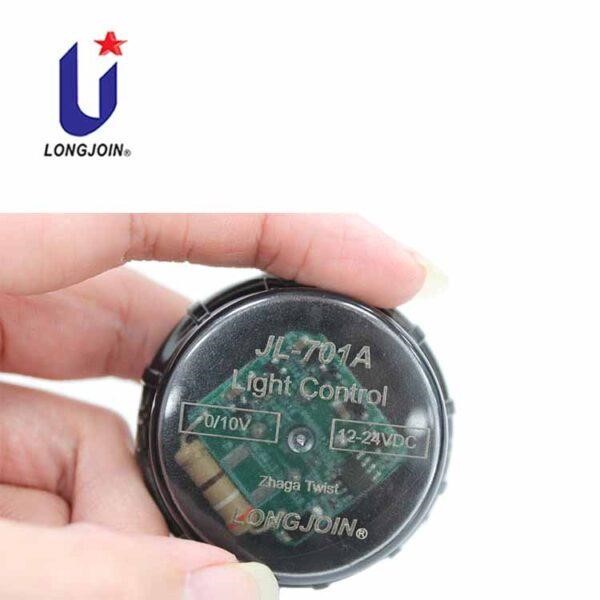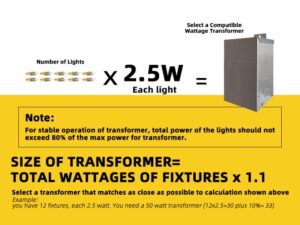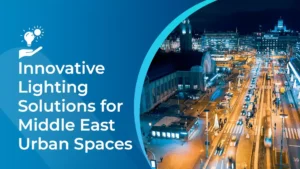What Is The Zhaga Book 18 Standard And How Is It Used In Smart City Sensors
What is Zhaga

Zhaga is a global consortium that aims to standardize the LED modules used in LED lighting systems. Zhaga’s primary purpose is to ensure exchangeability, which involves achieving interoperability between items produced by different producers.
If an LED module you purchased from a manufacturer fails, Zhaga allows you to get and use a module from another manufacturer. Alternatively, if the lighting fixture’s light output falls behind current technology, the corresponding component can be upgraded.
The term Zhaga is not an abbreviation, hence it has no meaning. Zhaga is the name of a waterfall in Sichuan Province, China. The Zhaga Consortium was created in 2010. Since then, hundreds of companies have joined this network.
Zhaga is publishing a series of novels. These articles go into great detail on how LED fixtures and LED modules work together. Eliminates excessive limits on LED modules and luminaire design. Many electrical firms throughout the world are members of the Zhaga Consortium. Zhaga members include armature and LED module makers, as well as test laboratories.
Zhaga defines the physical dimensions, photometric characteristics, and electrical and thermal behavior of LED luminaire components. Manufacturers adhere to these definitions and prepare items for the worldwide market. Zhaga improves the supply chain and facilitates the supply of components for lighting installations. Reduces production costs and allows products to reach the market in less time.
Zhaga Book 18 2.0
Zhaga Book 18 Ed 2.0 describes the mechanical, electrical, and communication interfaces between luminaires, sensors, and/or communication modules. This offers information about a solution with two modules.

(Future-proof Zhaga-D4i New Generations Connect Interface Product Parts)
Book 18 Ed. 2.0 combines complementing Zhaga Consortium specifications with D4i specifications from the Digital Illumination Interface Alliance (DiiA). Zhaga and DiiA worked to establish genuine plug-and-play interoperability, which benefits specifiers, buyers, installers, and end users.


JL-700L Zhaga Book-18 Receptacle (Cable version)
A plug-and-play, socket-based connectivity system makes it simple to add or upgrade sensors and/or communication modules, allowing luminaires to keep up with rapid advances in digital networking and sensing technology, while module manufacturers can innovate and diversify using an open global interface standard. By updating the module rather than the full luminaire, the luminaire is future-proofed, which is an important criterion in Smart City lighting.
The new Zhaga-D4i certification is currently in use worldwide for LED luminaires that use a Zhaga Book 18 receptacle and LED control gear that meets the D4i specifications. Luminaires can now be certified by Dekra and Intertek, which are Zhaga-recognized test facilities. Zhaga-D4i module certification, which includes sensors and/or communication devices with a Zhaga Book 18 plug and D4i compatibility, began in the first quarter of 2020.
What is the difference between NEMA and Zhaga?
In general, the NEMA receptacle is the American standard connector for the lighting industry, allowing electrical and mechanical connections between nodes and fixtures. NEMA sockets are commonly used in outdoor lighting, particularly street lighting.
The Zhaga Book 18 specification refers to a standardized socket that is becoming increasingly popular in Europe and will be preferred in the future.
Why zhaga is preferred over NEMA
Individual lights (lighting fixtures) in Europe have traditionally not been controlled externally. A growing percentage of smart street lighting projects in Europe are specifying Zhaga sockets on top of the bulbs. The Zhaga-based controller is derived from the LED driver’s low-voltage power supply, which decreases cost, size, and reliability by incorporating fewer electronic components.
Sensors can also be deployed by connecting a second Zhaga socket to the bottom of the luminaire. However, in other circumstances, these sensors must utilize very little power since the auxiliary power needed to power the controller’s LED driver is limited.
In addition to the capabilities listed above, we believe that the most significant advantage of Zhaga is that it standardizes the relevant standards. A proper interface definition should merely outline the interaction between the luminaire and the light engine, rather than limiting the design of the light engine or luminaire. A good interface standard should allow for innovation in the light engine’s internal design while also ensuring the stability of the component linked to the luminaire. Meanwhile, Zhaga has clear guidelines for light engines worldwide, LED drivers, and sensor designs. Its primary goal is to simplify the interchange and compatibility of products from various producers in the alliance. This has the potential to encourage innovation and competition in LED lighting applications, with consumers benefiting most significantly.
Finally, Zhaga has established a certification mechanism to support its standards to foster trust in interoperability. To prevent abuse, an impartial testing organization can verify a product’s certification status against publicly accessible databases and trademarks.
Advantages of Zhaga Book 18 sockets:
Users benefit from street lighting using Zhaga Book 18 sockets in the following ways:
Standardized sockets: They allow for the interchangeability of LED modules and drivers from multiple manufacturers, providing flexibility while simplifying maintenance and upgrades.
Future-Proofing: By employing a common standard, street lighting installations may be planned to accommodate future LED module and driver replacements without needing costly adjustments or redesign.
Maintenance Efficiency: Standardized sockets make it easier and faster to maintain street lighting equipment. The street lighting which use Zhaga Book 18 sockets promotes professionalism and universality, reduces maintenance, and contributes to long-term sustainability.
Do you have a comparable project that needs Zhaga book 18 but needs further guidance before you can choose if it is the right gadget for your project? If so then we’ve got you covered, and Shanghai Longjoin we’ve a team of experts ready to guide you at every step of your project. You are welcome to contact us here.
Conclusion:
In summary, the Zhaga Book 18 standard, developed by the Zhaga global consortium, emerges as a crucial force in standardizing LED modules and bolstering interoperability for smart city sensor applications. With its recent iteration, Zhaga Book 18 2.0, the standard introduces plug-and-play capabilities and aligns with D4i specifications, fostering seamless integration of luminaires with evolving digital technologies. In contrast to the NEMA receptacle, particularly prevalent in the U.S., Zhaga sets itself apart in Europe by streamlining interactions between LED light engines and luminaires. This not only encourages internal design innovation but also ensures stability and compatibility across products from diverse manufacturers within the Zhaga alliance. The certification mechanism adds a layer of credibility to Zhaga compliance, instilling trust in product interoperability and contributing to long-term sustainability in street lighting maintenance. The standardized Zhaga Book 18 sockets bring forth tangible benefits like interchangeability, future-proofing, and enhanced maintenance efficiency, underscoring the positive impact of Zhaga’s efforts on street lighting installations and fostering innovation and competition in the LED lighting sector.
External links:
https://zhagastandard.org/





